In your life there are some irritating characters. People who irritate you to no end. Maybe its their behavior, body language, or way they speak or dress. They just infuriate you and you cannot tolerate their presence. In case you cannot ask them to effoff, you just get the interaction with them over as soon as possible. Yet they persist.
Similarly, there are software applications which fit in this role of irritating characters. They bug you to do things which it (meaning the software designers) think is the “correct” way. One such crappy piece of software is the new “block editor” of wordpress. It is an application which irritates and interferes in the very process of writing a blog. Maybe there are people who like it, (to each their own). But I personally think the block editor is a cook book of how not to design software. Or Maybe I am too old to make new chic editors work well for me.
Every time it bugs you. Like a cheap salesman trying to sell his shitty wares to you. I am not sure why I can’t use the “classic editor” if I am more comfortable with it. Why is wordpress hell bent shoving this un-user friendly piece of software down to everyone’s posts? The block editor may have its advantages, but not for me. I prefer simple editor which allows me to focus on the writing instead of a menu popping every now and then which I have to click to dismiss. If I want a block I will call it, I don’t want the editor to push a block between me and my post. Block editor is defective by design in a way.
And there is no way you can turn it off unless you pay. WordPress perhaps knows this, that their editor is trash. Hence only with a hefty upgrade of “business” plan you can get it off your back by installing a “plugin” for classic editor, which should be there by default in the first place. This is akin to ransomware. You pay us or you continue to have shitty, sub-optimal experience with irritating pop-ups. Mind you I am not talking about completely free wordpress installation, it doesn’t even come with “personal” or “premium” plans so even with paid service they don’t want you to have any control over what editor you use.
So my workflow is now, to create a new post in “block editor”, then save a draft, return to the “All posts” and then continue with classic editor. Even then it continuously bugs you if I want to edit in the block editor, if I wanted to I would have, Now since I don’t want, can you please effoff and store this simple request of using classic editor next time?

No it won’t. Aren’t software designers at wordpress capable of understanding this simple request? Or they are doing it willingly to force people to move to their way however irritating and uncomfortable they are?
If wordpress even removes this support for classic editor, I will surely leave this platform and take my blog somewhere else. I was contemplating to leave it this year, but my lethargy prevented me from doing it. But then, lethargy has its limits and and so has patience in dealing with (purposefully) badly designed software applications and processes.
Forever Free Fonts
There are fonts and there are fonts. One of my earliest recollections of cognising that there are different “fonts” is from a typewritten letter I saw in my childhood (perhaps in the early-mid 90s). Though I didn’t know the term “font” then. Now I had seen typewritten materials earlier, as our exam papers were typewritten. But this said letter was somehow “different”. I didn’t know exactly what was different, but that letter and the typewritten text felt so elegant and aesthetic (again these words I didn’t know then, but trying to reconstruct my feelings from that time) as compared to the other typewritten documents that I had seen. The fact that I still remember that letter implies that it must have had some impact on my mind at that time. After that the printed “text” was never the same. I always tried to “see” the shapes of the text that I would read. Hence I “discovered” that the “fonts” in my school textbooks, and other books are different. I also discovered sans and serif in this way, but didn’t know the terms for them till a few years later. Thus began the journey to look at fonts keenly. Even with my handwriting, I developed 3-4 different scripts. None were cursive. I would play with the slant, then height of the letters, and my fountain pens did play the capable tools. With the computers came in plethora of fonts, more than you could count and keep track of. In the various image editing programmes the fonts achieve prime importance. A good font can make or break a document. It can render something mundane or render it to aesthetic appeal.
A good scientific question to think about is how does our cognitive system recognise that it is the same letter even if it is written in different fonts? Everyone’s handwriting is different even then (if they are legible) we can read and understand what they have written. This would imply that our cognitive system for recognising font faces as particular characters of language must be very very flexible. Any rigidity and we would not communicate. Douglas Hofstadter considers this very question in one of his essays Variations on a Theme as the Crux of Creativity in the Metamagical Themas (an anagram of “Mathematical Games” by Martin Gardner whose columns Hofstadter replaced) column in Scientific American. The compilation of the columns was later published as a book in 1985.
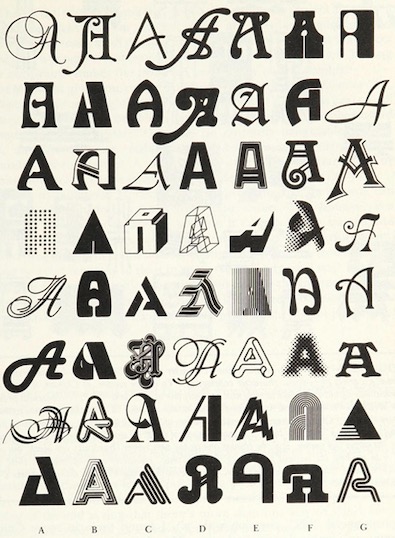
FIGURE 12-3. 56 As in different styles, all drawn from a recent Letraset catalogue. The names of their respective typefaces are given on the facing page. To native readers of the Latin alphabet, it is an almost immediate visual experience to recognize how any one of them is an ‘A’. No conscious processing is required. A couple of these seem far-fetched, but the rest are quite obvious. The most canonical of all 56 is probably Univers (D-3). Note that no single feature, such as having a pointed top or a horizontal crossbar (or even a crossbar at all!) is reliable. Even being open at the bottom is unreliable. What is going on here? p. 243
Hence we have more and more fonts. Some very legible and some not so much.
Though I never somehow liked Times New Roman or Arial, which arguably might be the most popular fonts in documents (how do you find out the most used font?). Might be because they are default fonts on MS Word. One of my earliest, serious documents that I had to prepare on the computer was the project report of my bachelors programme. I did use MS Word, but the font used was Bookman Old Style. And the document did look different than the rest.

I did have a lot of fonts at that point. I installed all fonts that I could get my hands on. Remember this is early 2000, finding free resources on the internet was not easy, and downloading and getting them to your computer was even a bigger an issue (particularly large files). I owe to Viktor Juliet Papa most of my computer knowledge. Because of his mentoring I could muster guts to take out my HDD to cafe where he was the manager, to get downloaded stuff back. (Again only, portable data transfer devices were 3.5 inch floppy drives with 1.44 MB memory. Good luck with transferring 100s of MBs!, my main disk was 8G for reference) So much to risk, but no risk no gain.
Then in that summer during my internship at the University, I discovered LaTeX. And Computer Modern. It looked sooo elegant compared to TNR or Arial. And it had all the mathematical symbols too. At that point, you had to edit the tex file separately, and then compile it via terminal. It would produce a dvi file, which you would convert to postscript via dvi2ps, and then to pdf via ps2pdf. But it was all worth it! The output was divine compared to plebian MS Word. They say LaTeX doesn’t work well for people who have sold their souls! So my report for masters just two years later was in LaTeX. And I never switched back for most serious documents.
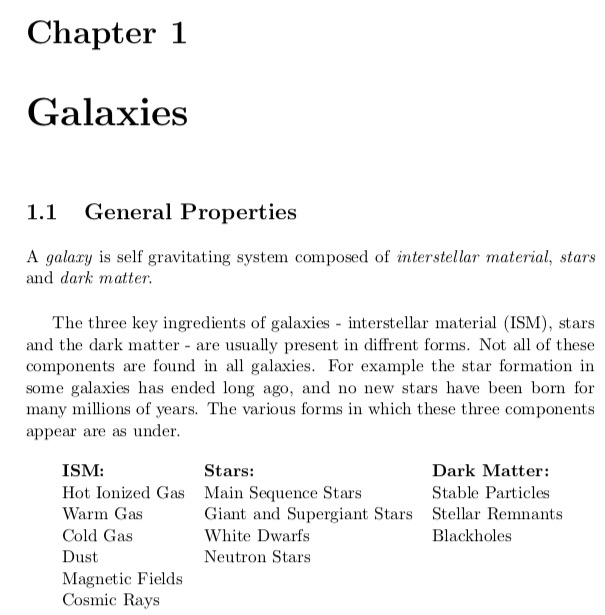
In the earliest days, there were very limited fonts in LaTeX. But with packages like XeLaTeX and LuaLaTeX you can use any system fonts in your documents, including non-Roman scripts also. Now there are native packages also which have a variety of fonts. So in my PhD I used Linux Libertine as the main font and associated Linux Biolinum as the Sans font. Wikipedia logo uses Linux Libertine.

Now with libertinus package you can use it with pdfLaTeX, no need to use XeLaTeX/LuaLaTeX (though some might find this step regressive). The font comes with full math support, so that you can write the documents seamlessly.

Another nice set of fonts with full math support are kpfonts. Though I do not personally like the default sans that is bundled with it.

And one of the more elegant math fonts is urw-garamond, garamondx with mathdesign. Though this set has licensing restrictions that you may not like.
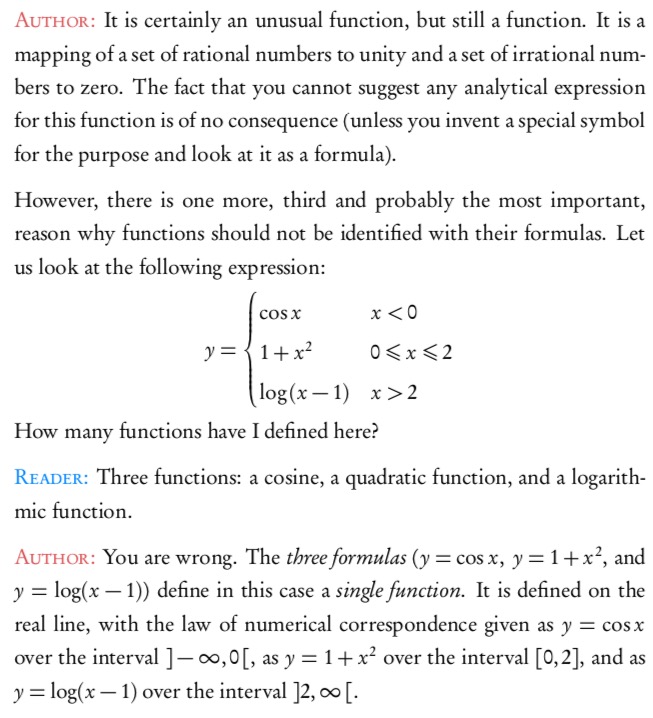
A sans math variant, that I have used occasionally is the GFS Neohellenic from the Greek Font Society.

These days for most of my Office documents (including google docs) I use EB Garamond for serif. It is too good.

And Quattracento Sans. For monofonts, particularly to be used in text editors (Emacs, I still use Linux Biolinum

in TeXShop I use Average Mono.

Some of the other sans fonts that I do use often are
GeoSans Light, Comfortaa and Josefin Sans.
For fixed width fonts, Latin Modern and Inconsolata, TeX Gyre Cursor are used. See the programming fonts in the list below
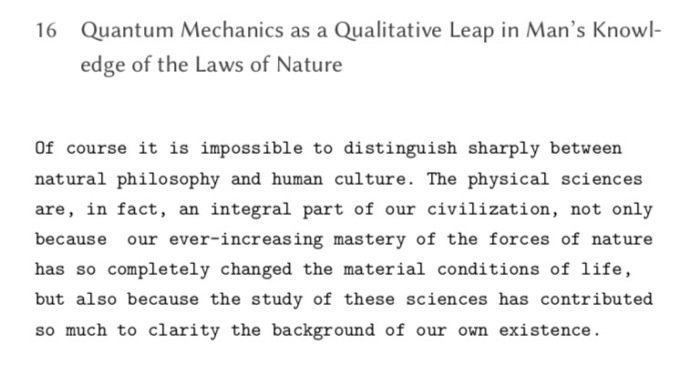
For handwriting effect there are several nice fonts that I have used. The best ones are Purisa, Comili
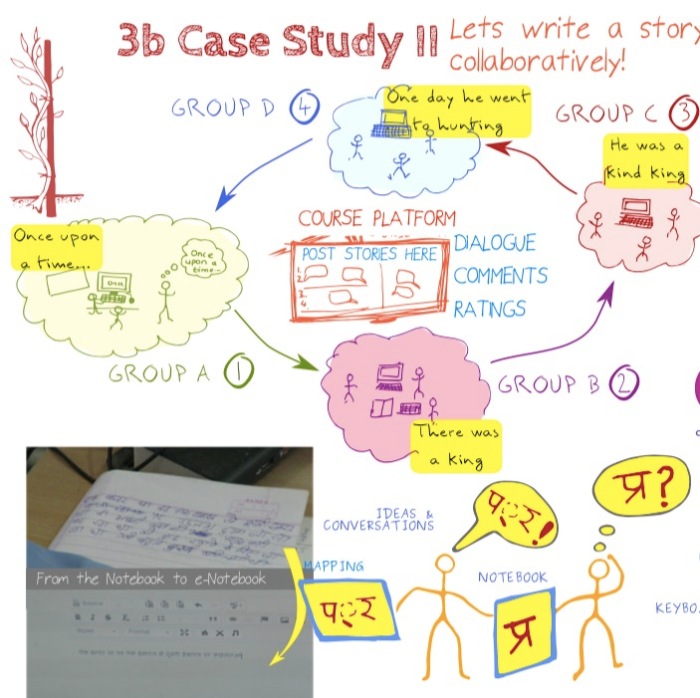
Amatic SC is a very elegant font for titles

New fonts will be continually developed. And for me fonts being free (as in freedom) is the most significant aspect. Given this there is a large number of fonts which have been released under GPL, OFL and similar open licenses. Fonts released GPL license come with the font exception. Below is a partial list of free (as in freedom) fonts which you can browse to get the font for your needs (though some might have non-free content). The listing is alphabetical
Arkandis Digital Foundry Not updated since 2015, but has nice fonts

Font Library (a largish list of Free Fonts with various licenses)

Google Fonts Several nice fonts, in different scripts too.

LaTeX Font Catalog contains OTF and TTF files as well, my go to site for choosing LaTeX fonts

Lesser Known Programming Fonts
Programming Fonts (check individual licenses)
Let me know any other links to font databases which have free (as in freedom) fonts.
Happy typesetting!
Color and underline text in LaTeX
For a particular project, I had a requirement that the text be coloured as well as underlined. Now making text underlined in LaTeX has a default support in the form of \underline{text}, which simply produces an underlined text.
But what if you want to customise the underlining, for example, change the thickness of the underline, or its distance from the text baseline. Or simply you might want to have a different colour for the underline. There are several packages which allow you to customise this exact requirement.
For the present post I will choose the soul package which has some other goodies for typesetting as well. You can load the package with \usepackage{soul} Along with underlining, you have have strikeout and highlight. To setup the underline, soul package gives three options, underline depth, underline thickness and underline colour (page 12-13 of the package documentation).
You can set this in the preamble
\setul{⟨underline depth⟩}{⟨underline thickness⟩}
It is recommended that the units of these lengths are in ex, so that they are relative to the font size. For example,
\setul{0.3ex}{0.1ex}
To use it in the document \ul{underlined text} will produce

Another option is to set the colour of the underline. This can be done with
\setulcolor{gray}
With this option, the above code will look like

The color option can be changed anywhere in the document, so you can have change of colours as required. Defining in the preamble has a universal effect.
So far so good. Now in this case I wanted the underlined text to be of different colour. For this one can define a newcommand with text colour option.
\newcommand{\ublue}[1]{{\color{SteelBlue}\ul{#1}}}
I am also using the svgnames option from the xcolor package for calling colours by names.
\usepackage[svgnames]{xcolor}
In the main text, you can use it as \ublue{coloured and underlined text} to produce the required result. Will produce

How many photos are enough?

A photo taken at eye of the Mooi River. I wish I had taken perhaps hundreds of photos, but alas I have only a few.
Whenever I go to an interesting place or look at something interesting, I try to take photos. Though recently in last couple of years this has gone down a bit. But now that I have a camera phone, I try to make up for it. When I am in the process of taking photos, I try to take as many angles and frames as possible. And at that time, it seems whatever photos I have taken are enough or sometimes even think that they are more than sufficient. All the angles and frames are covered. I try to take macro shots if its an object, and some full frame shots. And I am actually satisfied with the quality and quantity of the photos at that moment. And I smugly leave subjecting that subject to further assaults of the camera lens.
But then, when I look at the photos again, I realise that I have taken too few! I then realise a few more photos could have been better, maybe this frame or this angle is missing. And then I despair. While it would have made sense in the era of film cameras, to conserve the film, in the era of the digital, the preview makes it possible for us to delete something which was not good. So you can spend slightly more on experimenting with the photos. But alas, I still have hard time convincing myself that I have not taken enough photos, and always end up taking too few..
An account of Nagpur state from 1790
This is an interesting account of Nagpur state from late eighteenth century. It is part of a small book titled Journal Of A Route To Nagpore by Daniel Robinson Leckie. I have taken some liberty to replace the long s typeset as f with regular s. For example, coft is cost. Some of the names are in archaic English but one can make sense of the them. For example Peshwa is Paishwah. This account shows the extent of the Rajah of Nagpore’s territories as well as some peculiarities of the region. Some of the places that are mentioned are the fortifications, palace, Jumma Talao, Sakkardarah etc. The account also has a short, somewhat incorrect, history of the house of the Bhoslas. Leckie says the Nagpur Bhoslas were descended from Shivaji’s house which clearly was not the case. Also there are remarks on the current affairs of the Nagpur state with the Peshwa in Pune and Chatrapati in Satara.

ACCOUNT OF NAGPORE,
&c. &c.
NAGPORE, situated in 79º 46′ east longitude from Greenwich, and 21º 49′ north latitude, is the present capital of Gondwauna1, a name little known to Europeans, perhaps owing to the remote situation of it from our settlements, and the Rauj2 of that name having been dismembered before we possessed any territory in India, at which time the comparatively confined state of the affairs of the Company did not lead to geographical inquiries.
I have taken no small degree of pains to ascertain the boundaries of Gondwauna; and though I will not pretend to say that the information I have procured is in every respect: exact, yet it may serve to give a general idea of the extent of the country.
It is not amiss to observe, that the people of this place are by no means communicative, and very circumspedt in giving information, particularly to Europeans, and it has cost me no small degree of trouble to collect what trifling information this account contains.
Gondwauna is bounded on the north-east; by an imaginary line, drawn from the town of Belhare to the city of Ruttunpoor; on the south-east by such another imaginary line, drawn from Ruttunpoor through the village of Soormul (situated about five coss to the north-east of Nurrah, which last is laid down in the map), to the junction of the Oordah and Beingunga rivers; on the south-wedt by the Oordah (Wadha) river; and pn the north-east by that chain of mountains which separates it from Malwa.
When Gondwauna was partly reduced by Aulumgwer, he obliged a great number of the natives together with the Rajah, to embrace the Mahomedan religion ; and the country remained for a series of years in this situation, the Rajah paying a fort of homage to the Moghul, as lord paramount : when, in the beginning of the present century, Ragojee Bhooshla, descended from the great Sevagi, reduced the greatest part of Gondwauna, to the south of the Nurbudda, with the province of Berar. The lenity with which he treated the Gonde Rajah deserves particular mention, as it shows a trait of humanity in the Merhattahs worthy of the highest pitch of civilization. He not only abstained from all forts of personal violence, but allotted three lachs of rupees annually for the Gonde Rajah’s maintenance, and the fort for him to live in, by no means as a confinement. Burhaun Shah, the son of the conquered Rajah, has still handsome allowances, and the fort to live in ; and the confidence which the late Moodajee placed in him was great: for what could be a greater mark of it in the East, than putting his family and women under his charge when he went upon any warlike expedition? which he constantly did.
Ragojee was the founder of Nagpore, which he surrounded with a rampart, it being only an insignificant village appertaining to the fort prior to his capture of it. It is situated oh a high plain, is richly cultivated, and produces fine wheat, and bounded by hills to the north- west and south. The Nag Nudde, a rivulet running to the southward, gives name to the town.
The houses are generally meanly built and covered with tiles, and the streets are narrow and filthy. The only good building is the palace, begun by the late Moodajee, and now finishing by his fon, the present Rajah ; it is built of a blue done dug out of a quarry in large blocks on the western skirts of the town. The present Rajah, however, has destroyed the grand effect which would have been produced by the stone alone, by intermixing brick-work in the building. There is a very large and deep3 tank near the west gate, called Jumma Tallow, three sides of which are handsomely built up with masonry ; and the Rajah has a foundery to the southward of the town, called Shukerderri, where he calls tolerably good brass guns. There, with some few gardens of the Rajah’s, neatly laid out in walks planted with cypress-trees, and interspersed with fountains, are the only places of note at Nagpore.
It should appear that Major Rennell (Memoir, second edition, 4to. page 12) is not perfectly clear with regard to the idea he has formed of the Merhattah state, that all the chiefs owe a fort of obedience to the Paishwah, resembling that of the German Princes to the Emperor. The account I heard from the Dewaun4 in the Durbar5 was,
But the fine extensive country which the Paishwah occupies, together with the advantage of playing the Sattarah puppet, will always give him influence with the other chiefs.
“That there is a person whom they call the representative of the Rauj, who is kept in the fort of Sattarah, and he is treated with all imaginable respect when he makes his appearance at Poonah, which is only upon particular occassions ; and when at Sattarah he is supplied with every luxury, and magnificently attended. On the demise of this image of government the handsome son of some poor man is chosen to supply his room. The Paishwah is prime minister to the Merhattah state; the Rajah of Nagpore, &c. commander in chief of the armies ; and they, as well as the rest of the chiefs, call themselves. servants of the Rauj; and none acknowledges the least immediate authority of the Paishwah, but they are all bound in cafes of necessity to render mutual assistance to each other, for the public good of the constitution.’’
The present Rajah, Rogojee Bhooshla, the grandson of the Conqueror (Ragojee the first was succeeded by his eldest son, Jannojee who was succeeded by his brother Sabage, who was slain in battle by Moodajee, the father of the. present Rajah. I have not the particulars their histories) does not seem to be either adapted to civil or military business ; he is generally dressed plainly in white, but wears costly diamonds and pearls; his behaviour is courteous to strangers. His great penchant is for elephants and mares. He has about 200 of the former, the finest; I ever beheld; and they are fed so sumptuously with sugar-cane, treacle, ghee, &c.. and not unfrequently fowl pallow, that they become almost mad with lust, breaking their chains and doing great mischief, which is considered by the Merhattahs as fine sport. The principal people about the Rajah are, his brother, Munnea Bapoo, a very quiet young man; Bhowaunny Caulloo, the Dewaun, a shrewd old fellow, and his nephew, Pondrang, the commander and paymaster of the army; Siree Dhur, the Monshee; and Mahadajee Leshkery, the Rajah’s confident, who is consulted on all occasions.
The Rajah does not keep up above 10,000 horse, the pay of which, as is the custom among all native princes, is irregularly distributed. He has two battalions of Sepoys, armed and clothed like ours ; and although they have been drilled by black officers, formerly belonging either to the Nabob of Lucknow, or our service, yet they go through their exercise very badly, and I do not think they will be able to make a stand against any body of native Sepoys disciplined by European officers.
I have heard that the total collections of the Rajah’s dominions, including Ruttunpore and Cuttae, only amount to seventy lacks of rupees per annum. I will not, however, pretend to affirm that this is exact though I do not think it can much exceed that sum; for the Rajah’s country, notwithstanding the great extent of it, does not contain a proportionable quantity of cultivated land to that which is waste and occupied by forests.
It is generally supposed that Nagpore is the capital of Berar. This is evidently a mistake. The inhabitants of Nagpore talk relatively of Berar as an adjoining province, as we do of Bahar to Bengal; and it has been shown that Nagpore is a city of late date. Elichpour is the capital of Berar, by the accounts I have received from the natives, who represent it as a very ancient city, and much larger than Nagpore.
A custom prevails in this town, which I cannot forbear taking notice of, because it serves to prove that long usage will give a plausibility to things seemingly the most preposterous. The bramins and best people at Nagpore have women attendants upon their families, whom they breed up from their childhood, and are called Butkies, or Slauls. They attend on their masters and mistresses during the day-time, and are permitted to go to any man they please in the night; some of them become very rich, and they are in general very handsome, fine women.
Nagpore,
August 20, 1790.
(Daniel Robinson Leckie)
1The three ancient capitals of Gondwauna were Gurry Mudlah, Gurry *****, and Deogur.
2The dominion of a Raujah is called a Rauj, that of a King is denominated a kingdom.
3Pond
4Minister
5Court
The Astronomers
Looking at this vast natural drama from their observation posts on the minute planet Earth as it revolves around the insignificant star called the sun, a handful of astronomers seek to gain an understanding of the cosmos. Using instruments constructed from materials found on their planet, they follow the activities in space from their observatories and launch rocket-borne telescopes from Earth. Some people confuse them with astrologers, but astronomers reject all such notions of kinship; others look up to them because their thoughts and ideas move in realms beyond the imagination of those of us engaged in everyday activities. Their work brings them a step closer to creation, at least to the creation of the uninhabited world, but they are sober scientists who do not attempt to adduce ethical norms from the phenomena they observe. Their involvement with cosmic matters does not make them better human beings. They are not motivated solely by a dedication to greater knowledge. As is true of other segments of human society, thoughts of competition and career advancement enter into their calculations; quite a few discoveries grew out of just such considerations. Yet this is not to deny, as we shall learn, that we find among them a passion for knowledge and much friendly cooperation. The fruit of their research is the work of human beings and as such is often imperfect, even erroneous. But despite setbacks the course of the science of astronomy, beginning with the Babylonians and culminating in modern astrophysics, has led ever forward.
Rudolph Kippenhahn, 100 Billion Suns p. 6-7
Bertrand Russel’s proof of naïve realism being false
What is naïve realism you may ask? To put simply naïve realism is a belief that whatever you see with your senses is the reality. There is nothing more to reality than what your sense perceptions bring to you. It is a direct unmediated access to reality. There is no “interpretation” involved.
In philosophy of perception and philosophy of mind, naïve realism (also known as direct realism, perceptual realism, or common sense realism) is the idea that the senses provide us with direct awareness of objects as they really are. When referred to as direct realism, naïve realism is often contrasted with indirect realism.
Naïve Realism
To put this in other words, naïve realism fails to distinguish between the phenomenal and the physical object. That is to say, all there is to the world is how we perceive it, nothing more.
Bertrand Russel gave a one line proof of why naïve realism is false. And this is the topic of this post. Also, the proof has some implications for science education, hence the interest.
Naive realism leads to physics, and physics, if true, shows that naive realism is false. Therefore naive realism, if true, is false; therefore it is false.
As quoted in Mary Henle – On the Distinction Between the Phenomenal and the Physical Object, John M. Nicholas (ed.), Images, Perception, and Knowledge, 187-193. (1977)
Henle in her rather short essay (quoted above) on this makes various philosophically oriented arguments to show that it is an easier position to defend when we make a distinction between the two.
But considering the “proof” of Russel, I would like to bring in evidence from science education which makes it even more compelling. There is a very rich body of literature on the theme of misconceptions or alternative conceptions among students and even teachers. Many of these arise simply because of a direct interpretation of events and objects around us.
Consider a simple example of Newton’s first law of motion.
In an inertial frame of reference, an object either remains at rest or continues to move at a constant velocity, unless acted upon by a force.
Now for the naïve realists this will never be possible, as they will never see an object going by itself without application of any force. In real world, friction will bring to halt bodies which are moving. Similar other examples from the misconceptions also do fit in this pattern. This is perhaps so because most of the science is counter-intuitive in nature. With our simple perception we can only do a limited science (perhaps create empirical laws). So one can perhaps say that learners with alternative conceptions hold naïve realist world-view (to some degree) and the role of science education is to change this.
Orwellian Days
Orwellian Days
To the Editor:
These are Orwellian days when war is peace and a xxx per cent national unemployment is a rising economy. Yet despite this deranged logic, there is more to be concerned about on the national scene, and that is the casual acceptance by the populace of almost every conceivable immoral or unethical practice on the part of the Administration. Whether it be the I.T.T. scandal, the Watergate bugging, the wheat deal or the bombing of civilians, it all seems to be accepted with a shrug. All this is ample evidence that we have died spiritually, and we are ready for totalitarianism. I remember once a high administration official was fired for accepting an overcoat as a gift.
Gordon Fels
Richmond, Oct. 16, 1972
The Calculus Bottleneck
What if someone told you that learners in high-school don’t actually need calculus as a compulsory subject for a career in STEM? Surely I would disagree. After all, without calculus how will they understand many of the topics in the STEM. For example basic Newtonian mechanics? Another line of thought that might be put forth is that calculus allows learners to develop an interest in mathematics and pursue it as a career. But swell, nothing could be farther from truth. From what I have experienced there are two major categories of students who take calculus in high school. The first category would be students who are just out of wits about calculus, its purpose and meaning. They just see it as another infliction upon them without any significance. They struggle with remembering the formulae and will just barely pass the course (and many times don’t). These students hate mathematics, calculus makes it worse. Integration is opposite of differentiation: but why teach it to us?

The other major category of students is the one who take on calculus but with a caveat. They are the ones who will score in the 80s and 90s in the examination, but they have cracked the exam system per se. And might not have any foundational knowledge of calculus. But someone might ask how can one score 95/100 and still not have foundational knowledge of the subject matter? This is the way to beat the system. These learners are usually drilled in solving problems of a particular type. It is no different than chug and slug. They see a particular problem – they apply a rote learned method to solve it and bingo there is a solution. I have seen students labour “problem sets” — typically hundreds of problems of a given type — to score in the 90s in the papers. This just gives them the ability to solve typical problems which are usually asked in the examinations. Since the examination does not ask for questions based on conceptual knowledge – it never gets tested. Perhaps even their teachers if asked conceptual questions will not be able to handle them — it will be treated like a radioactive waste and thrown out — since it will be out of syllabus.
There is a third minority (a real minority, and may not be real!, this might just be wishful thinking) who will actually understand the meaning and significance of the conceptual knowledge, and they might not score in the 90s. They might take a fancy for the subject due to calculus but the way syllabus is structured it is astonishing that any students have any fascination left for mathematics. Like someone had said: the fascination for mathematics cannot be taught it must be caught. And this is exactly what MAA and NCTM have said in their statement about dropping calculus from high-school.
What the members of the mathematical community—especially those in the Mathematical Association of America (MAA) and the National Council of Teachers of Mathematics (NCTM)—have known for a long time is that the pump that is pushing more students into more advanced mathematics ever earlier is not just ineffective: It is counter-productive. Too many students are moving too fast through preliminary courses so that they can get calculus onto their high school transcripts. The result is that even if they are able to pass high school calculus, they have established an inadequate foundation on which to build the mathematical knowledge required for a STEM career. (emphasis added)
The problem stems from the fact that the foundational topics which are prerequisites for calculus are on shaky grounds. No wonder anything build on top of them is not solid. I remember having very rudimentary calculus in college chemistry, when it was not needed and high-flying into physical meaning of derivatives in physics which was not covered enough earlier. There is a certain mismatch between the expectations from the students and their actual knowledge of the discipline as they come to college from high-school.
Too many students are being accelerated, short-changing their preparation in and knowledge of algebra, geometry, trigonometry, and other precalculus topics. Too many students experience a secondary school calculus course that drills on the techniques and procedures that will enable them to successfully answer standard problems, but are never challenged to encounter and understand the conceptual foundations of calculus. Too many students arrive at college Calculus I and see a course that looks like a review of what they learned the year before. By the time they realize that the expectations of this course are very different from what they had previously experienced, it is often too late to get up to speed.

Though they conclude that with enough solid conceptual background in these prerequisites it might be beneficial for the students to have a calculus course in the highschool.
Learning to Learn
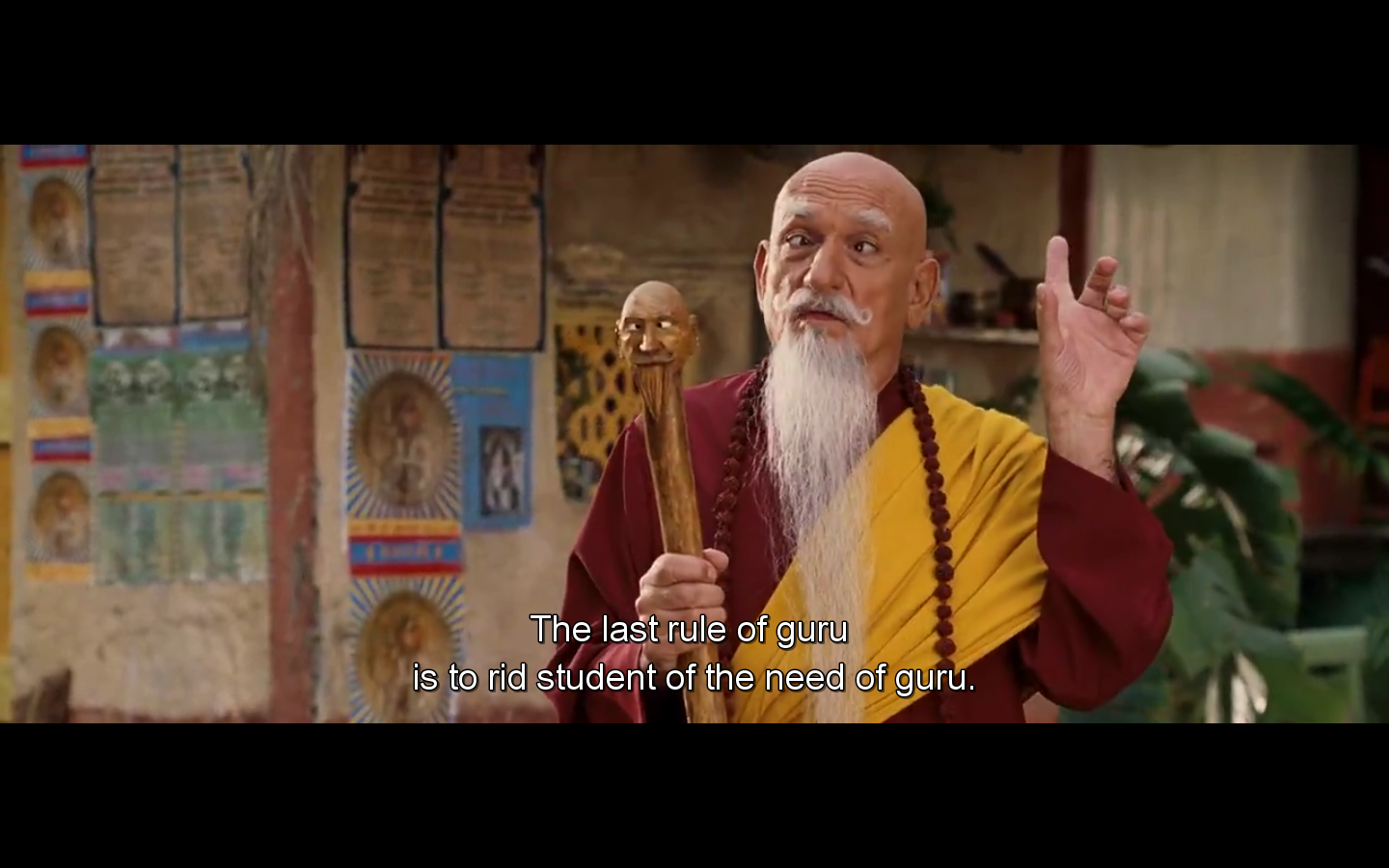
Perhaps this should be the rule from the beginning…

